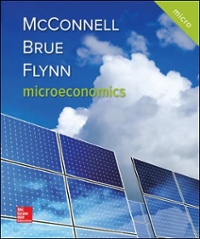Address the questions below
The Cox proportional hazards model is to be used to model the rate at which students leave a certain profession before qualification. Assuming they stay in the profession, students will qualify three years after joining the profession. In the fitted model, the hazard depends on the time, t, since joining the profession and three covariates. The covariates, their categories and the fitted parameters for each category are shown in the table below: Covariate Possibility Parameter Size of employer large 0 small 0.4 Degree studied none 0.3 Science -0.1 Arts 0.2 other 0 Location London 0 other UK -0.3 overseas 0.4 (i) Defining clearly all the terms you use, write down an expression for the hazard function in this model. [3] (ii) State the class of students that is most likely to proceed to qualification under this model, and that which is least likely. [2] (iii) A student who has been in the profession for one year moves from a "small" employer to a "large" employer. Express the probability that he will qualify with the "large" employer Pr in terms of the probability that he would have qualified if he had stayed with the "small" employer Ps, all other factors being equal. [2] [Total 7]An investor purchased a government bond on 1 January in a particular year. The bond pays coupons of 6% pa six monthly in arrears on 30 June and 31 December. The bond is due to be redeemed at 105% 11 years after the purchase date. The investor pays income tax at the rate of 23% on 1 April on any coupon payments received in the previous year (1 April to 31 March), and also pays capital gains tax on that date at the rate of 40% on any capital gains realised in the previous year. (i) Calculate the price paid for f100 nominal of the bond, given that the investor achieves a net yield of 5% pa effective interest. [7] (ii) Without doing any further calculations, explain how and why your answer to (i) would alter if tax were collected on 1 October instead of 1 April each year. [2] [Total 9] An investor purchases f100 nominal of a fixed-interest stock, which pays coupons of 7% pa half-yearly in arrears. The stock is redeemable at par and can be redeemed at the option of the borrower at any time between 5 and 10 years from the date of issue. The investor is subject to tax at the rate of 40% on income and 25% on capital gains. (i) Calculate the maximum price that the investor should pay in order to obtain a net yield of at least 6% pa. [5] (ii) Given that this was the price paid by the investor, calculate his net annual running yield, convertible half-yearly. [1] [Total 6] An equity pays half-yearly dividends. A dividend of d per share is due in exactly 3 months' time. Subsequent dividends are expected to grow at a compound rate of g per half-year forever. (i) If i denotes the annual effective rate of return on the equity, show that P, the price per share, is given by: P =- d(1+ 1)* (1+i)* -(1+g) (ii) The current price of the share is $3.60, dividend growth is expected to be 2% per half-year and the next dividend payment in 3 months is expected to be 12p. Calculate the expected annual effective rate of return for an investor who purchases the share








